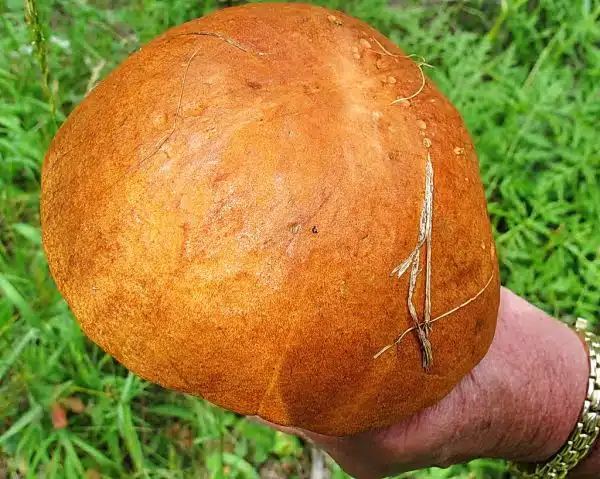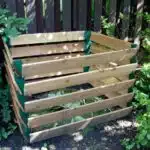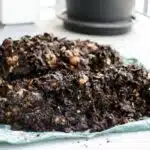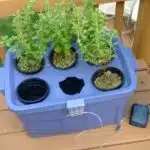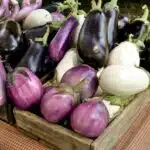Food waste is a significant issue that continues to plague our society. According to the United Nations, about one-third of all food produced globally goes to waste each year. This situation not only poses an ethical dilemma but also has environmental and economic consequences. Fortunately, there are ways to reduce food waste and promote sustainability in our homes. One of such methods is regrowing foods from scraps.
Regrowing foods from scraps involves using parts of vegetables or fruits that we typically discard, such as the roots, stems, or seeds, to grow new plants. This practice not only saves money but also reduces the amount of food waste we generate. Moreover, it promotes resourcefulness and self-sufficiency while contributing to a more sustainable food system. In this article, we will explore how to regrow various types of produce from scraps and discuss the benefits of incorporating this practice into our daily lives.
The Problem Of Food Waste
It is no secret that reducing waste has become a pressing issue in today’s society. With the increasing awareness of environmental concerns, individuals and organizations alike have been seeking sustainable solutions to combat this problem. One such solution involves regrowing foods from scraps.
Food waste is a significant contributor to environmental degradation, as it leads to increased greenhouse gas emissions and landfill waste. In fact, according to the United Nations’ Food and Agriculture Organization, around one-third of all food produced for human consumption is lost or wasted globally. This not only has negative impacts on the environment but also on food availability and accessibility for those in need.
Regrowing foods from scraps presents an opportunity to reduce waste and promote sustainability. By utilizing parts of vegetables and fruits that are typically discarded, such as stems or seeds, individuals can produce new plants without having to purchase additional produce. This not only reduces household waste but also lowers the demand for new products, ultimately leading to a reduction in carbon emissions associated with transportation and production processes.
The Benefits Of Regrowing Foods From Scraps
The benefits of regrowing foods from scraps are numerous and extend beyond just reducing waste. One of the most significant advantages is the increased sustainability of our food system. By regrowing vegetables and fruits from scraps, we reduce our reliance on industrial agriculture, which is a major contributor to greenhouse gas emissions, soil degradation, and water pollution. Growing your own food also reduces transportation costs and emissions associated with shipping produce across the country.
Moreover, regrowing foods from scraps is an excellent way to save money while eating healthy. Buying produce in bulk can be expensive, but by using kitchen scraps to grow new plants, you can save money on groceries while still enjoying fresh fruits and vegetables. Additionally, regrowing foods from scraps promotes a DIY gardening culture that encourages people to take control of their own health and wellness. Not only does this increase self-reliance and independence, but it also fosters a sense of community as people share their gardening tips and successes with one another.
In conclusion, regrowing foods from scraps offers numerous sustainability benefits that go beyond just reducing waste. It saves money, promotes DIY gardening culture, and increases self-reliance while reducing our dependence on industrial agriculture. In the subsequent section, we will discuss some tips for choosing the right scraps to regrow into new plants.
Choosing The Right Scraps To Regrow
Food scraps can be an excellent resource for regrowing food, but it is important to know the right types of scraps to use and the conditions required for successful regrowth. Different foods have different requirements for what types of scraps can be used to regrow them. Additionally, the environment in which the scraps are stored and prepared is important for successful regrowth. For example, some scraps require light, while others do not. Choosing the right scraps to regrow is essential in order to maximize the success of the regrowth process and reduce food waste. Preparing the scraps for the regrowth process will also play a key role in the success of the regrowth. Scraps should be stored in an environment that allows for optimal regrowth, and cut into the correct size for the food being regrown. By taking the necessary steps to choose the right scraps and prepare them correctly, regrowing food from scraps can be a sustainable and cost-effective way to reduce food waste.
Types Of Scraps
When it comes to regrowing foods from scraps, choosing the right scraps is key. Not all food scraps are created equal, and some will be more successful in regrowing than others. By using scraps, we can reduce waste and find creative uses for parts of plants that would otherwise be thrown away.
One type of scrap that is commonly used for regrowing is the base or stem of a plant. This includes vegetables like celery, lettuce, and bok choy. By cutting off the bottom inch or two of these plants and placing them in water or soil, they can begin to regrow new leaves and stems. This not only reduces waste but can also provide a sustainable source of fresh produce.
Another type of scrap that can be used for regrowing is seeds. While many fruits and vegetables have seeds that are not viable for growing new plants, there are still plenty of options available. Some examples include peppers, tomatoes, avocados, and citrus fruits. By saving these seeds and planting them in soil, we can create a new generation of plants while reducing waste at the same time.
In conclusion, choosing the right scraps to regrow is an important aspect of reducing waste and promoting sustainability. By focusing on items like vegetable bases/stems and viable seeds, we can find creative uses for parts of plants that would otherwise be thrown away while also creating a sustainable source of fresh produce.
Conditions For Regrowth
When it comes to choosing the right scraps to regrow, it is important to consider the conditions necessary for successful regrowth. Optimal temperature and required moisture are two key factors that can greatly affect the success of regrowing food scraps. Different vegetables and fruits may have varying requirements, so it is important to do research on specific plants before attempting to regrow them.
For example, some plants may require warmer temperatures and higher humidity levels to successfully regrow, while others may prefer cooler temperatures and less moisture. Additionally, some plants may require specific soil types or nutrient levels in order to thrive. By understanding these conditions, we can increase our chances of successfully regrowing food scraps and reducing waste.
Overall, choosing the right scraps to regrow involves more than simply selecting items that seem viable for growth. It also requires an understanding of the optimal conditions for each plant’s growth and a willingness to provide those conditions consistently. By doing so, we can reduce waste while also creating a sustainable source of fresh produce for ourselves and others in our communities.
Preparing Scraps
In addition to choosing the right scraps to regrow, it is also important to prepare them properly. Preparing scraps involves removing any spoiled or damaged parts and ensuring that they have enough nutrients and moisture to support growth. By taking these steps, we can increase our chances of successfully regrowing food scraps and reducing waste.
One key factor in preparing scraps is ensuring that they have access to adequate nutrients. This may involve adding compost or other fertilizers to the soil, or using nutrient-rich water solutions to encourage growth. Additionally, it is important to ensure that the soil is well-draining and free from contaminants that could harm the plants.
Another important aspect of preparing scraps for regrowth is maintaining optimal moisture levels. Depending on the plant, this may involve misting the leaves regularly or watering the soil as needed. It is also important to avoid overwatering, as this can lead to root rot and other problems that can hinder growth.
Overall, by carefully selecting and preparing scraps for regrowth, we can reduce waste while also creating a sustainable source of fresh produce for ourselves and others in our communities. Whether you are an experienced gardener or just starting out, taking these steps can help you get the most out of your food scraps while supporting a healthier planet for all.
Regrowing Lettuce From Scraps
Who knew that green thumbs could be cultivated in the kitchen? Well, with lettuce regrowth, anyone can become an expert in kitchen gardening. Not only is it a sustainable way to reduce food waste, but it also saves money and time.
To start your lettuce regrowth journey, save the bottom of your lettuce heads instead of discarding them. Place the scraps in a shallow dish with enough water to cover the bottom of the leaves but not fully submerge them. Keep the dish near a window with access to sunlight and change the water every few days. In about a week, you will notice new roots and growth emerging from the center of the scraps.
Once your lettuce scraps have grown into small plants, transfer them into soil-filled pots or an outdoor garden bed for continued growth. Make sure to keep them hydrated by watering them regularly and providing adequate sunlight. With patience and care, you can enjoy fresh lettuce leaves without having to purchase new ones.
Next up on our list is regrowing carrots from scraps! But first, let’s take a closer look at how this root vegetable can be sustainably grown from discarded pieces.
Regrowing Carrots From Scraps
Carrots are a delicious and nutritious root vegetable that can be regrown from scraps. Growing techniques for regrowing carrots are simple, but require patience and attention to detail. To start, take the top of a carrot, about an inch or two long, and place it in a shallow dish of water. Make sure the water just covers the bottom of the top, and change the water every few days to prevent mold.
Once your carrot top has sprouted roots, it’s time to transfer it to soil. The ideal soil type for regrowing carrots is loose, well-draining soil with plenty of organic matter. Add compost or other organic material to improve soil quality and drainage. Make small holes in the soil about an inch deep and gently place your carrot tops into them. Cover with soil and water gently but thoroughly.
Growing carrots from scraps takes time – up to several months – but is a rewarding way to reduce food waste while enjoying fresh produce at home. With proper growing techniques and attention to soil types, anyone can regrow carrots with success.
Next up: Regrowing Potatoes from Scraps…
Regrowing Potatoes From Scraps
Potatoes are a staple food in many households, and regrowing them from scraps is an easy and sustainable way to ensure a steady supply. Growing conditions are important when it comes to potato regeneration. Potatoes need well-draining soil that is rich in organic matter. A pH range of 5.0-6.0 is optimal for their growth, and they require full sun exposure.
Harvesting techniques play an essential role in the successful regrowth of potatoes. Once the potatoes have sprouted, wait until they reach about 3-4 inches tall before harvesting them. Gently dig around the base of the plant with a fork or spade to avoid damaging any new tubers that may be forming underground. Be sure to leave some sprouts behind as they will continue to grow and produce more potatoes.
Regrowing potatoes from scraps not only reduces waste but also saves money on groceries while providing fresh produce for your family throughout the year. By following the proper growing conditions and harvesting techniques, you can easily regrow potatoes from scraps in your backyard or even indoors in a container garden.
Transition: Now that we know how easy it is to regrow potatoes from scraps, let’s dive into another popular food item that can be regenerated – pineapple!
Regrowing Pineapple From Scraps
While regrowing potatoes from scraps may be a common practice, did you know that you can also regrow pineapples? Pineapple propagation is a simple and sustainable way to reduce food waste and enjoy fresh produce at home. Here are some plant care tips to help you successfully regrow your own pineapple.
To begin, select a fresh pineapple with healthy green leaves. Cut off the top of the fruit, including the leaves and about an inch of flesh. Remove any remaining flesh from the base of the crown, being careful not to damage the delicate roots that will eventually grow. Allow the crown to dry for a day or two before planting it in well-draining soil.
Once planted, place your pineapple in a sunny location with plenty of warmth and humidity. Water it regularly, but avoid over-watering which can lead to root rot. With proper care, your pineapple should start growing new leaves within a few weeks and may even produce fruit in 2-3 years! By regrowing pineapples from scraps, you can enjoy this tropical treat while reducing food waste and promoting sustainability in your home garden.
Ready for another food regeneration project? Avocado pits are another fun and easy item to regrow from scraps!
Regrowing Avocado From Scraps
Avocado is a versatile fruit that has become increasingly popular in recent years. It is rich in healthy fats, vitamins, and minerals, making it an excellent addition to any diet. However, avocados can be quite expensive, and their shelf life is short. Fortunately, you can regrow avocado from scraps to enjoy its benefits for longer.
To regrow avocado from scraps, you need the pit or seed of the fruit. Rinse off any remaining flesh and dry it completely with a paper towel. Stick toothpicks into the sides of the seed and suspend it over a glass of water so that the bottom half is submerged. Place the glass in a well-lit area but away from direct sunlight. Change the water every few days until roots appear at the bottom of the seed.
Once roots have grown about two inches long, transfer your avocado to a pot filled with soil mix. Plant your avocado pit with its top level with soil surface and cover lightly with soil mix. Water regularly but do not let it sit in standing water as this could rot roots.
Tips for successful regrowth:
- Choose ripe avocados: Avocado pits from ripe fruits are more likely to sprout than those from unripe ones.
- Be patient: Avocado pits can take up to six weeks to sprout roots.
- Keep it warm: Avocado seeds require warmth to germinate successfully; keep them between 70°F (21°C) and 80°F (27°C).
- Prune regularly: Once your avocado plant has grown several leaves, trim off one-third of each branch’s length to encourage growth and prevent legginess.
Growing avocado from scraps may seem like a daunting task at first, but with patience and care, you will soon have a thriving plant full of delicious fruit. By following these tips for successful regrowth, you can ensure that your plant grows strong and healthy. Soon, you will be enjoying the benefits of homegrown avocados while reducing food waste and promoting sustainability.
Tips For Successful Regrowth
- When selecting scraps for regrowth, it is important to choose ones that are healthy, with no signs of decay.
- It is also important to consider the type of food, as some scraps are easier to regrow than others.
- To ensure successful regrowth, it is important to provide optimal growing conditions, such as soil, sunlight, and water.
- Additionally, when regrowing food, it is important to remember to harvest the food when it is ready, as this will ensure the best possible results.
Select Healthy Scraps
When it comes to regrowing foods from scraps, selecting the right ones is crucial. Choosing healthy and viable scraps can make all the difference in ensuring a successful regrowth. It is important to avoid diseased or damaged scraps as they may not produce healthy plants and could even spread disease to other plants.
To select healthy scraps, start by choosing produce that is fresh and free of any signs of decay or damage. Look for produce that is firm and has no soft spots or moldy areas. Additionally, choose produce that has intact roots, stems or leaves as these are necessary for successful regrowth.
When selecting viable scraps, consider the variety of produce you are using. Some vegetables such as carrots, onions, and celery may require only their base while others such as lettuce or herbs may require a stem with a few leaves attached. Remember that certain varieties may not be suitable for regrowth so do some research before attempting to grow them from scraps. By choosing healthy and viable scraps, you can ensure that your regrown produce will be healthy and delicious for your next meal.
Provide Optimal Growing Conditions
To successfully regrow food from scraps, it is important to provide optimal growing conditions. This means creating an environment that mimics the plant’s natural habitat and provides the necessary nutrients, light, and moisture for healthy growth. Indoor gardening techniques such as hydroponics or using grow lights can be used to create ideal conditions for regrowth.
When it comes to hydroponics, plants are grown in water-based systems that deliver nutrients directly to their roots. This method can be particularly effective for regrowing herbs and leafy greens as they have shallow root systems. Grow lights can also be used to provide additional light for plants that require more sunlight than what is available indoors. By providing optimal growing conditions, you can ensure that your regrown produce will thrive and produce healthy and flavorful crops.
In addition to hydroponics and grow lights, there are other factors to consider when providing optimal growing conditions. For example, it is important to maintain a consistent temperature and humidity level in the growing area. This can be achieved by using a humidifier or installing a ventilation system. It is also important to regularly monitor the pH level of the water or soil as well as nutrient levels to ensure that your plants are receiving everything they need for healthy growth. By paying attention to these details and providing optimal growing conditions, you can enjoy fresh produce year-round while reducing food waste in your home.
Conclusion: Embracing Sustainability Through Regrowing Food From Scraps
Moving towards a sustainable lifestyle has been gaining more attention lately, and one way to contribute to this is by reducing waste through regrowing food from scraps. It is an easy and practical way of turning food waste into something useful while also saving money. Moreover, it promotes self-sufficiency by providing fresh produce at the convenience of our own homes.
Regrowing food from scraps can be done in various ways, depending on the type of plant. Some examples include onions, garlic, and potatoes which can be grown from their bulbs or tubers. Meanwhile, celery, lettuce, and cabbage can regrow from their base or core. Regardless of the method chosen, it is important to remember that each plant requires proper care such as watering and sunlight exposure.
By embracing regrowing food from scraps, we not only reduce waste but also contribute to a more sustainable living environment. This practice helps reduce carbon footprint by minimizing transportation needed for shipping produce from farms to markets. Additionally, it allows us to have control over the quality of our food since we know exactly how they are grown and processed.
In conclusion, incorporating regrowing food into our daily lives is a simple yet effective way towards waste reduction and sustainable living. It provides not just environmental benefits but also financial savings while promoting self-sufficiency. By taking small steps towards this direction, we can make a significant impact on the world around us while serving others with nutritious produce.
Conclusion
Food waste is a major global issue, with an estimated one-third of all food produced for human consumption being lost or wasted every year. This has significant environmental, economic, and social impacts, including the loss of valuable resources and increased greenhouse gas emissions. One solution to this problem is regrowing foods from scraps, which not only reduces waste but also provides a sustainable source of fresh produce.
To successfully regrow foods from scraps, it is important to choose the right ones and follow proper techniques. Lettuce can be regrown by placing the base in water until it sprouts new leaves, while carrots can be grown by planting the tops in soil. Pineapple and avocado can also be regrown using their respective scraps. Not only does this process reduce waste, but it also provides an opportunity to learn about gardening and self-sustainability.
For example, a family started regrowing lettuce from scraps after noticing how much they were throwing away each week. They were able to save money on groceries while also reducing their environmental impact. Their children became interested in gardening and even started a small vegetable patch in their backyard. This simple act of regrowing food not only had practical benefits but also helped foster a sense of connection to nature and appreciation for where our food comes from.
In conclusion, regrowing foods from scraps is a simple yet effective way to reduce food waste and promote sustainability. By taking small steps towards self-sufficiency and learning about gardening techniques, we can make positive changes in our own lives while also contributing to a healthier planet for future generations.
Image Credits
- “Bolete Mushroom – harvested – San Juan Mountains” by Al_HikesAZ (featured)

